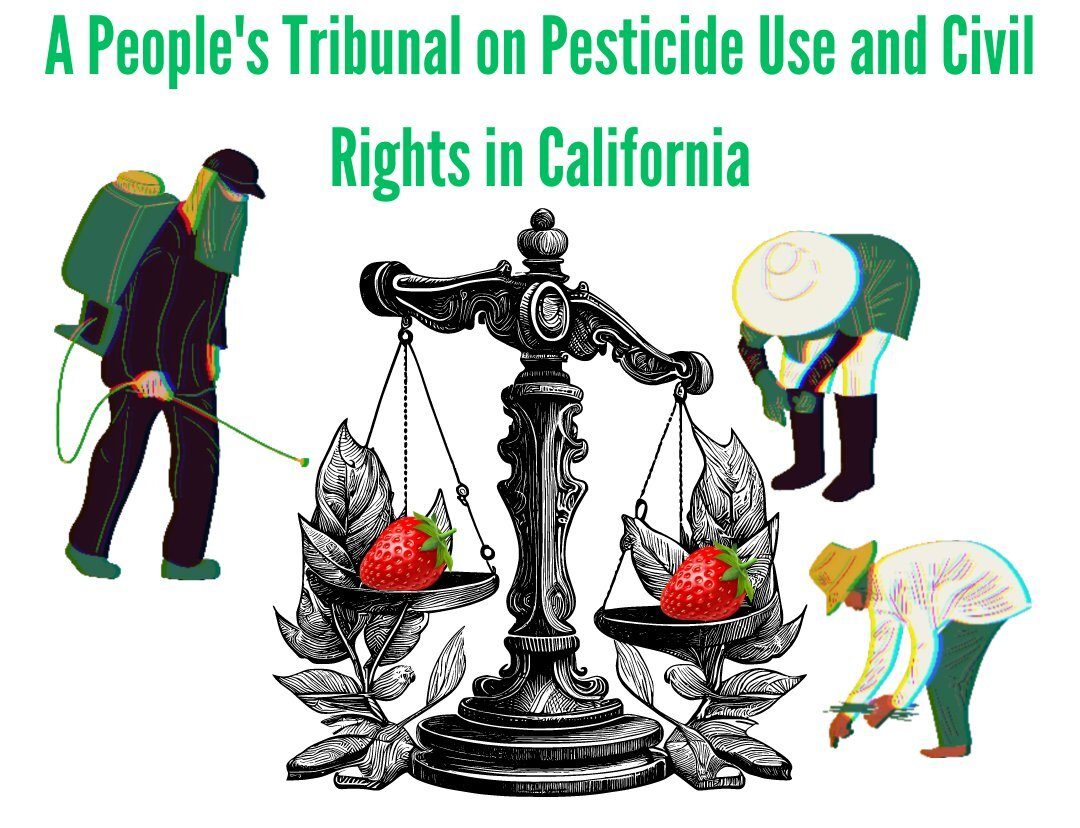Consider the context in which the agricultural industry operates. Each year, among over 1.4 million farmworkers nationwide, hundreds of thousands are poisoned by pesticides, when we account for unreported and misdiagnosed cases. Farmworkers have the highest rate of chemical-related occupational illness in the country. Farmworkers and the people who live, work, or attend school near agriculture face a constant risk of exposure to pesticides. Even among farmworkers, the most common experience of pesticide exposure occurs during “routine work – not applying pesticides.” On fields and farms, pesticides move beyond areas of application, as dust or droplets – they persist in the immediate environment and can drift for miles. What this means for a given community can be devastating. For example, if 1,3-D drifts for up to 7 miles, this means that the entirety of communities such as Watsonville, California are potentially exposed, in addition to being surrounded by fields where glyphosate, the active ingredient in Round-Up, is still applied, and other carcinogens and toxic air contaminants such as Chloropicrin are applied and vaporize from the soil.
Communities experience acute and chronic effects of exposure to pesticides. Long-term exposure is often inevitable for workers and for families who live or attend school near agriculture. And the exposure is concentrated. Eleven majority Latinx counties in California experience 900% more pesticide use per person and per square mile than the 25 counties with the lowest Latinx populations. Use of the “toxic 13” is worse – Fresno County, for example, is exposed to 17.7 times more of these active ingredients than the 25 counties with the lowest Latinx populations. For 100 years, regulation of these issues has followed a model of “agricultural exceptionalism” – farmworkers and domestic workers were excluded from New Deal legislation such as the National Labor Relations Act and the Fair Labor Standards Act. The Federal Insecticide, Fungicide, and Rodenticide Act (FIFRA) and its implementing regulations – which grant EPA the authority to regulate the sale, use, and distribution of pesticides to preserve environment and protect human health, favor broad approval of pesticides over human health and the consumer over the worker or the community. FIFRA is the rare environmental statute enacted without a private citizen suit provision. It is plagued by slow rulemakings and failure to regulate certain active ingredients for years if not decades. And it grants primary authority for enforcing pesticide-related regulations to the states, which, in turn rely on county Agricultural Commissioners for enforcement and compliance assurance.
The result is that by any measure, from lack of occupational protections to risk assessments focused on consumer protection to school-based exposure to acute and chronic health outcomes, farmworkers and agricultural communities are among the least protected, least visible, and most vulnerable populations in the United States. In California, 97% of farmworkers are Latinx, 92% are Spanish-speaking and 90.8% are immigrants. The first finding of a violation of EPA regulations under the Civil Rights Act of 1964 was made in Angelita C., on behalf of children who attended schools near methyl bromide applications. State agencies gather, and make available to the public, considerable data through pesticide registration, restricted materials permitting, air monitoring, pesticide use near school sites, and other programs. And state laws prohibit state-funded discrimination and require that agencies advance environmental justice. Yet 1) State agencies lack the ability to comply with civil rights laws; 2) Existing laws are difficult to enforce while publicly available data remain underutilized; and 3) Even as agencies begin to advance racial equity resolutions and policies, they do so without the benefit of input from agricultural communities.
Current Projects
CLEANR is proud to work with Golden Gate University School of Law, Californians for Pesticide Reform, and a coalition of organizations across California to build capacity to identify and address civil rights violations, make use of existing law to improve compliance with and enforcement of rules that govern pesticide use near sensitive sites such as schools, and achieve innovative updates to statutes, rules, and guidances to advance environmental justice. This project is sponsored by a generous grant from the Robert Wood Johnson Foundation. For more information, please contact Dr. Gregg Macey, CLEANR director.
News
-

Let’s hold our state accountable for pesticide regulation: Urge Gov. Newsom to sign AB 652 – Lookout Santa Cruz
-

Guest Commentary | Pesticides’ uneven regulatory system violates civil rights – Santa Cruz Sentinel
-

Lindsay Citizens Speak Against Pesticide Impacts – Sun Gazette
-

CLEANR, Californians for Pesticide Reform, UCI Law, and the Newkirk Center invite you to join us for a People’s Tribunal
Past Policy Workshops
Regulating Labor Abuses in the Food Supply Chain
March 9, 2018
This roundtable continued an ongoing discussion of how sustainability might support efforts to eradicate labor abuses in our food system. A core principle driving modern food policy is sustainability—the idea that food should be cultivated in a manner that preserves rather than depletes food sources for future generations. Increasingly, government officials, advocates, and corporate actors have sought to expand the concept of sustainability to account for social costs such as exploitation in the production of food. Yet, the legal tools available for supporting this broadened view of sustainability remain limited. This roundtable focused on a strategy that has garnered some success: pressuring entities up the food chain to enter into legally binding contracts with ethical production provisions. This roundtable will generate concrete recommendations for those interested in utilizing this model of norms enforcement.
Food Security and Sustainability
March 10, 2017
This roundtable brought together academics, practitioners, activists, and students to examine the relationship between food security and environmental sustainability as alternative legal frames. It considered the extent to which those frames complement and contradict one another, setting a relatively straightforward but ambitious agenda: to identify legal reforms that advance the goals of both food security and environmental sustainability.